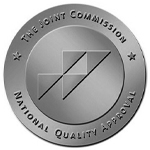
You’ve probably heard the phrase “Leaves of three, let it be.” But do you know other ways to protect yourself from poison ivy and similar plants? Keystone Infectious Disease’s Medical Director, Dr. Raghavendra Tirupathi, and medical students studying under him, Sonia Babu, Anna Joshua, Manisha Chavan and Aneela Satya Ravanam, answer common questions and discuss how to protect yourself in today’s Take Care article.
What causes rashes from poisonous plants?
Poison ivy, poison oak and poison sumac belong to a group of plants which commonly cause allergic skin reactions. These plants typically cause a rash when they are ingested or contact skin due to an oily resin called urushiol, present in their leaves, stems and roots.
Where are these plants found, and how can you identify them?
These plants are found throughout the United States (except in Alaska and Hawaii) and grow in forests, fields, wetlands, near streams, roadsides, urban parks and backyards.
Poison ivy plants come in eastern and western varieties. Eastern poison ivy has a ropelike, hairy vine with three green leaves attached to a single stem. Western poison ivy grows as a shrub with three leaves attached to a single stem.
Poison oak also usually has three leaves, which resemble oak leaves, growing on a shrub. Pacific poison oak may appear vine-like.
Poison sumac is typically found in wooded areas and grows as a shrub with seven to thirteen leaves arranged in pairs.
Who is most at risk?
Any occupations that spend time outside are at higher risk of exposure, such as landscapers, gardeners, farmers, painters, roofers, construction workers, laborers and mechanics. Firefighters and forestry workers are at additional risk due to dealing with forest fires, and they can develop rashes from contact with damaged or burning poisonous plants.
How does it affect the skin and what does the rash look like?
These plants cause a red, bumpy, severely itchy rash, usually appearing in streaks. It typically develops within 24-48 hours after contact, with peak severity one to 14 days later. The rash may take up to three weeks to develop in patients with first-time exposure, and can later develop into fluid-filled blisters.

Can it spread?
The rashes don’t spread from person to person. However, it might seem like the rash is spreading because new rashes can develop on areas of the skin that came into contact with urushiol oil at different times. The extent of the rash also depends on the sensitivity of your skin and the amount of oil you touched.
It’s impossible to contract poison ivy, oak or sumac by touching someone else’s rash. However, if you come into contact with the oil on someone else’s body or clothing, you can get a rash.
There are also other ways the rash can spread indirectly. If your pet was exposed to the plants and has the oil on their fur, touching your pet could cause a rash. Clothing is another common way to be exposed indirectly. Other contaminated items like gardening tools, camping gear, golf clubs, hiking poles and bicycles can also transfer the oil to your skin.
The oil can stay on surfaces for years until it’s washed off. Therefore, it’s important to immediately and thoroughly clean any potentially contaminated surfaces.
How is it diagnosed?
To diagnose a poison plant rash, doctors typically start with a physical examination of the rash. They assess your symptoms and potential exposure and review your medical history. The rash is usually recognizable by its characteristic appearance: red, itchy and blistering in a linear pattern. No specific laboratory tests are required to diagnose a poison ivy rash.
If you haven’t been outdoors or in contact with urushiol, other skin conditions or causes will be considered. In some cases, patch testing may be needed to rule out other conditions like allergic contact dermatitis. If no diagnosis is reached, a dermatologist may be consulted for further evaluation.
There are other allergens and irritants that can cause contact dermatitis or an itchy rash in people with sensitivities. These include other plants, chemicals found in common items such as soaps and cosmetics, nickel, latex, medications and skin creams. If you develop a rash and are unsure of the cause, consult a healthcare professional for proper diagnosis and treatment.
How do you treat it?
The first step after exposure to urushiol is to immediately wash the affected area with rubbing alcohol, degreasing soap or detergent and lots of water. This helps remove any remaining oil and minimizes the severity of the reaction, stopping the spread of oil to other parts of the body.
Over-the-counter treatments like calamine lotion or hydrocortisone cream can reduce itching and inflammation. For blisters that start weeping or draining, you can use topical astringents made with aluminum acetate. Applying these treatments several times a day can provide relief.
In addition to lotions and creams, antihistamines like diphenhydramine (Benadryl) can help control itching and reduce the allergic reaction. Cool compresses or oatmeal baths can also soothe irritated skin and provide temporary relief from itching.
Keeping the affected area clean and dry is important to prevent infection. It’s also crucial to avoid scratching the rash which can lead to infection and potentially spread the urushiol to other parts of the body or other people. Keeping fingernails short and clean can help minimize damage from scratching.
Persistent and severe cases might require stronger treatments, such as oral corticosteroids prescribed by a doctor. Call 911 if you have a rash covering more than a quarter of your body, a rash on the mucous membranes of your eyes, nose, mouth or genitals, or any signs of anaphylaxis, including breathing difficulties, hives and swelling.
How can I reduce my risk?
Learn to recognize the poisonous plants and remember the saying, “Leaves of three, let it be,” as poison ivy and oak typically have three leaflets.
When doing activities like hiking or gardening, wear long sleeves, long pants and gloves to minimize skin exposure. If you think you’ve touched a poisonous plant, wash your skin, clothes and outdoor equipment as soon as possible. Keep pets away from these plants, as they can spread it to you.
Use over-the-counter barrier skin creams like ivy block or lotion containing bentoquatam for some protection against urushiol if you know you’ll be in areas where the plants are common.
Do not burn plants that may contain poison ivy, oak or sumac, as inhaling smoke from burning plants can cause severe allergic respiratory problems.
Don’t let poisonous plants put a damper on your summer activities. By remembering to take precautions when spending time outdoors, you’ll reduce your chances of having a reaction.
This article contains general information only and should not be used as a substitute for professional diagnosis, treatment or care by a qualified health care provider.




